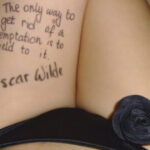January 29, 2025 Artistic eroticism
…ma la passione spesso conduce
a soddisfare le proprie voglie
senza indagare se il concupito
ha il cuore libero oppure ha moglie…
The Sexual Revolution of the 1970s
In the 1960s, young people began to claim the right to feel passion for peers of the opposite sex by dancing close together, body to body, the so-called brick dance, something different from love, understood as an engagement leading to marriage, which, according to Italian morality still in force in the 1960s, was consummated only after this act.
Inevitably, the next step was the need to satisfy one’s “cravings”, as Fabrizio De André already reported in those years.
The practice of passionate sexual relations contributed to the emergence of the desire for satisfying and fulfilling erotic relationships aimed at the full realization of pleasure.
In fact, the demand for greater autonomy from family and partner in the area of sexual relations had already begun in the 1960s, leading to a situation in which women began to become aware that they were an autonomous “subject” with their own needs, demands, and problems.

As a result, sex and sex education through the anatomical and erotic discovery of bodies (both male and female) became one of the topics requested by students at schools, and inevitably were widely covered in magazines published in the early 1970s.
In 1972, for the first time, the Italian edition of “Playboy”, which called itself a monthly magazine of “sexological popularization”, went on sale on Italian newsstands.
The young couple, married or not, was addressed by the magazine “Duepiù”, which in those years experienced a real boom in sales and dispensed advice on contraceptives, on problems (and especially on how to solve them…) that could arise in the relationship and on how to practice sex.
The youth music weekly “Ciao 2001”, in its “Dear Psych” column, devoted pages to teaching teen readers the difference between “light petting” and “heavy petting.”
The theme of the private, the body and the relationship with that of others was one of the dominant topics in the letters that thousands of young people wrote in those years in magazines of the most disparate cultural areas, from “Famiglia Cristiana” to the feminist monthly “Effe”, and to a great many other women’s magazines that were very popular at that time, such as “Gioia”, “Confidenze”, “Amica”, “Annabella” and “Grazia”, where the start of a process of discovery and erotic and sexual practice was witnessed.
There was, of course, no shortage of the ubiquitous advertising inserts that inundated readers with messages about the desirability, necessity, right, and duty of living an erotic life and experiencing sexual pleasure.
This discovery, this justification, was still pitted against deep feelings of guilt and the limits of what was and was not permissible with one’s own body and with one’s partner, the result of a deeply rooted Catholic morality in the country, which still has strong repercussions today, more than 50 years after that period.
From this point of view, the letters sent to Famiglia Cristiana in those years by young Catholics, who very often raised ethical and moral problems, were very interesting.
Was it a sin to kiss, fondle or have sexual relations before marriage ?
And in the area of sexuality, what were the limits to be respected ?
Which relationships were licit (natural ?) and which were illicit (unnatural) ?
Many of the writers reported (or confessed) that they had had sex with their partners before marriage, others wondered if they had sinned by practicing autoeroticism.
These elements pointed to an ongoing journey that began with the discovery of one’s own body, understood as the seat of needs, desires, and oppressions suffered, and contributed to the maturation of a new consciousness.













